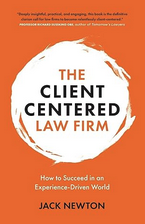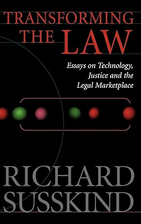Dean Perlman is right. The Internet changed the way lawyers communicate, but it otherwise made only modest changes in the nature of legal work. Generative AI will be a tsunami.
Can or should the American Bar Association and other bar associations attempt to influence the development and regulation of AI, to steer it in particular directions? The ABA has already made some steps in this direction, including:
- Resolution 112 (2019). It urged courts and lawyers to address key ethical and legal issues.
- Resolution 700 (2022). It asked governmental entities to avoid inadvertent bias associated with AI systems in the criminal justice system.
The ABA’s most ambitious effort to influence AI development and regulation so far has been the adoption of Resolution 604 at the 2023 Midyear Meeting in New Orleans. It urged both AI developers and various governmental entities to ensure AI use is subject to human authority, oversight and control, that there should be accountable for consequences related to the use of AI, and they should ensure the transparency and traceability of AI.
These steps at influencing the development and regulation of AI seem benign and bland. No doubt the ABA leadership will see a need to take more aggressive measures to influence the development and regulation of AI in the future. How should it go about this?
Since the past can be prologue, it’s worth considering a previous attempt by the organized bar to grapple with another revolutionary technology. The American Bar Association’s eLawyering project attempted to help lawyers use the Internet to achieve social benefits. The project tried to influence various governmental entities as well as the actions of lawyers. How well did these efforts work? How can the organized bar better steer the use of AI to benefit society?
I was a member of the ABA’s e-lawyering Task Force. That experience may have some relevance to dealing with AI going forward. Sometimes you need to know what happened, good or bad, to steer a better course in the future.
 eLawyering is having a moment. Several factors, including the success of Jack Newton’s book The Client-Centered Law Firm, and the success of businesses like Hello Divorce are drawing new attention to the idea of using the Internet to create and service new pools of clients for lawyers.
eLawyering is having a moment. Several factors, including the success of Jack Newton’s book The Client-Centered Law Firm, and the success of businesses like Hello Divorce are drawing new attention to the idea of using the Internet to create and service new pools of clients for lawyers.
ABA President Bill Paul created the Task Force in order to develop ways of using the Internet to provide better and cheaper legal services. This move was largely inspired by the ideas of Richard Susskind, who developed the idea of “the latent legal market,” i.e., those with some type of problem who could benefit from a lawyer’s help but are not presently receiving help from a lawyer.
The eLawyering Task Force mission was widely misunderstood. It was not a charitable, pro bono-type project. The goal was to help lawyers make money by better serving middle-class Americans, people who could afford to pay something for legal services.
The Two-Fer concept of helping the middle class while creating new profit centers for lawyers had great appeal, but I liked it more than most. I believed that if the project were successful, there would eventually be trickle-down benefits to the decidedly non-middle class people I grew up with. I was all in on eLawyering.
Richard Granat, the group’s first chair, thought ideas in my first book, The Complete Internet Handbook for Lawyers, might possibly help advance the project’s objectives. At ABA Techshow, before the group was formally operational, he invited me to join the Task Force.
One of my first steps was to create a private email mailing list to facilitate the group’s work. We had conference calls and occasional meetings during ABA events, but I thought we needed better internal communications. We did not have the same sophisticated collaboration tools available today, so mailing lists were state of the art.
Since the ABA’s official website had little or no information about the eLawyering project I created a website at my own expense to increase public awareness of the initiative.
From the first I was a consistent but naive advocate for aggressive action. Probably too aggressive.
I was not familiar with the ABA’s culture. Richard spent lots of time patiently explaining why my suggestions were impractical working within the ABA framework. Every explanation made sense but the overall picture was frustrating.
Sometimes rebels can be more trouble than they are worth. Eventually, a fellow Task Force member suggested that I should be satisfied even if the group could only make incremental progress working within the ABA. With some regret, I decided to leave the group.
In the end, my combination of ambition and naïveté about working within the ABA structure accomplished little. That doesn’t mean nothing was accomplished.
eLawyering Task Force Accomplishments
The more active members of the group promoted its goals through articles and presentations. Some traces of these efforts can be found here and there through searches on Google, Bing, etc. The ABA’s Online Legal Services section provides random links to traces of a few such efforts, but there is no central repository of the group’s activities, for reasons explained below.
The 2003 ABA House of Delegates approved the group’s websites.
Dennis Kennedy has suggested the group’s biggest success was creating a place where innovators could get to know each other and share ideas. Some people might take this remark as snarky, damning by faint praise, but from working with him over the years I know Dennis was serious and he has a point. Networking matters, and the residue of this is probably still providing at least some benefits today.
After a few years the ABA sunsetted the eLawyering project. Some of the project’s accomplishments have not survived the sunsetting:
- The ABA eventually followed up an official website to support the venture and I abandoned the unofficial site I had created to support the project. The official ABA site has vanished. Searches on the URLs of the former official ABA websites (org and eLawyering.com) bring up error messages. An Internet Archive search shows the site’s last recorded update was in 2017.
- The group initiated a public email mailing list at one point, but if it’s still operational it’s hard to find. After a little time spent at the ABA’s mailing list portal I can find no trace of it.
Why Not More?
With these accomplishments understood, it’s fair to ask why the eLawyering Task Force did not accomplish even more.
I don’t believe the group’s leadership was to blame:
- Bill Paul was a real leader in my book. Sure, he cribbed the basic idea from a British academic, but isn’t finding the best ideas and promoting them exactly what we would hope a leader would do?
- I can’t think of anyone better qualified to lead the Task Force than Richard Granat. He had worked in related areas for years and had a record of creativity, determination, and accomplishment.
- The late Jim Keane, one of the country’s top legal tech experts (and the inspiration for the ABA’s James I Keane Award for Excellence in eLawyering) was a co-chair of the group.
- The eminently well qualified Marc Lauritsen became co-chair about the time I left the group.
If the people were not the problem, then why didn’t the Task Force accomplish even more?
The ABA’s culture and organization were handicaps. The ABA is fundamentally a trade association. While it sometimes undertakes activities intended to create public benefits (like supporting pro bono projects and vetting judicial nominees) its primary reason for existence is advancing the interests of its members. Given this context, the fact that some perceived eLawyering as a sort of do-gooder program was probably a drawback.
Rocking the boat is seldom popular, especially when some perceive the project’s purpose as being something other than making life better for lawyers. This is well illustrated by the ABA Center for Innovation’s decision not publish an Op-Ed advocating reducing regulatory limitations on innovations intended to benefit consumers due to “political challenges” within the ABA.
The fact that ABA presidents are limited to a single one-year term was another handicap. I understand the desire to bring in new blood and fresh ideas, but the lack of continuity makes long-range initiatives difficult. When a president leaves his pet projects slide off the priority list.
Closing the Book on eLawyering
Did the eLawyering Task Force achieve what I and others hoped it would achieve? No.
Did the project achieve everything it could achieve working within the ABA structure? Probably.
I think the eLawyering project’s biggest benefit was just putting the ideas of eLawyering into play. Seeds were planted. The ground was too dry for them to fully blossom then, but attitudes and receptiveness evolve over time. Would Jack Duncan’s book be provoking so much discussion if not for the Task Force’s groundbreaking work? Would people like Erin Levine be leading the way to providing cost-effective services to middle class Americans?
Learning from the Past, Moving Forward
While the ABA eLawyering project’s contributions should not be underestimated, adapting to AI will require different approaches, bearing in mind the limits of institution-led change. Grappling with the AI and the new world AI will bring about is the biggest challenge the organized bar will face over the next decade. Let’s get it right.
